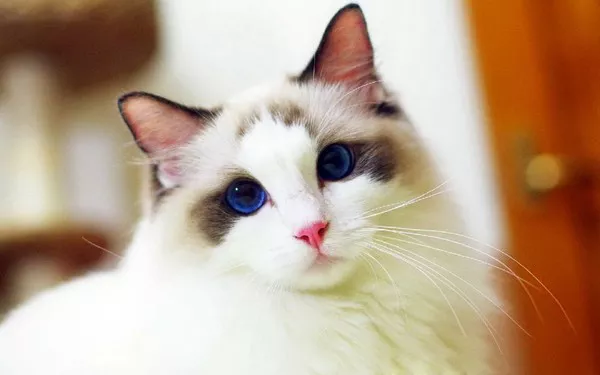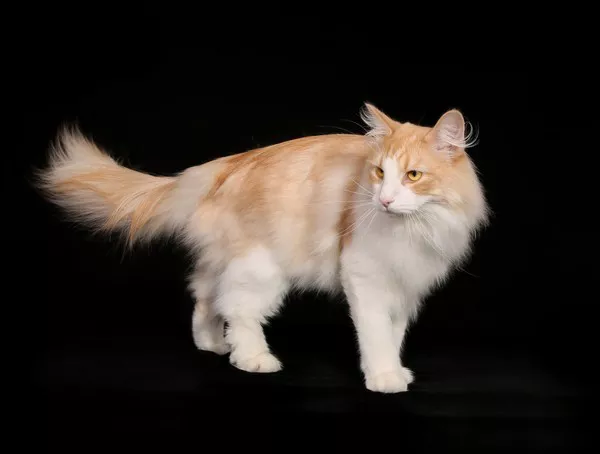Ragdoll cats, with their striking blue eyes, silky fur, and docile demeanor, have captured the hearts of cat enthusiasts around the world. Yet, the name “Ragdoll” seems to evoke a sense of mystery. Why are these feline companions called Ragdolls? In this comprehensive exploration, we unravel the origin of the name, shedding light on the captivating history and endearing traits that make Ragdoll cats truly unique.
The Birth of the Ragdoll Name
The story of the Ragdoll cat‘s name traces back to the early 1960s when a remarkable feline named Josephine became the matriarch of the breed. Josephine, a white Angora-like cat with striking blue eyes, belonged to Ann Baker, a breeder in Riverside, California. What set Josephine apart was not just her appearance but her extraordinary temperament.
Josephine displayed an unprecedented level of docility, often going limp when picked up, akin to a child’s ragdoll toy. This behavior, coupled with her striking beauty, caught the attention of Ann Baker, who decided to develop a breed that embodied both Josephine’s placid temperament and unique physical features.
The name “Ragdoll” was chosen to encapsulate this distinctive behavior, symbolizing the cat’s tendency to go limp and relaxed when held, just like a soft and yielding ragdoll. It is this endearing quality that became a defining trait of the breed, eventually shaping the name that would become synonymous with gentle and affectionate feline companions.
The Characteristics That Define a Ragdoll
To truly understand the essence of why they are called Ragdoll cats, delving into their distinctive characteristics is essential. Ragdolls are renowned for their specific physical traits and temperamental qualities that align with the name’s origin.
1. Limp and Relaxed Posture:
The hallmark behavior of Ragdoll cats is their tendency to go limp and relaxed when picked up or held. This unique trait, often referred to as “floppiness,” is a nod to their namesake and sets them apart from many other cat breeds. Ragdolls seem to melt into their owner’s arms, creating a sense of trust and connection.
2. Striking Blue Eyes:
Another defining feature of Ragdoll cats is their large, striking blue eyes. These mesmerizing eyes, combined with their semi-longhair coat and color-point patterns, contribute to their overall captivating appearance. The intensity of their gaze adds an extra layer of allure to these feline companions.
3. Semi-Longhair Coat and Color Points:
Ragdolls boast a semi-longhair coat, which is silky and soft to the touch. Their coat comes in various color points, a term used to describe a lighter body color with darker shading on the ears, face, paws, and tail – a characteristic shared with breeds like the Siamese. This distinctive coat adds to the Ragdoll’s visual appeal and elegance.
4. Large Size and Muscular Build:
Ragdolls are known for their large size and sturdy, muscular build. Adult male Ragdolls typically weigh between 15 to 20 pounds, while females generally range from 10 to 15 pounds. This substantial size, combined with their gentle nature, enhances the Ragdoll’s resemblance to a child’s huggable ragdoll toy.
5. Affectionate and Sociable Temperament:
The Ragdoll’s temperament is a key element that aligns with its namesake. These cats are known for their affectionate and sociable nature. They often form strong bonds with their human companions and enjoy being involved in family activities. Ragdolls are not only content with being held but actively seek out cuddle sessions, making them ideal lap cats.
See Also: What Makes Ragdoll Cats Special: Things You Need to Know
The Ragdoll Legacy: A Breed Shaped by Careful Breeding
The development of the Ragdoll breed was significantly influenced by Ann Baker’s breeding practices. Ann carefully selected cats with the desired traits, emphasizing not only physical characteristics but also temperament. The goal was to create a breed that embodied Josephine’s exceptional qualities, ensuring that future generations of Ragdolls would continue to exhibit the distinctive “floppiness” and gentle nature.
As the breed gained recognition, other breeders became involved in shaping the Ragdoll standard. Today, responsible breeders adhere to specific guidelines to maintain the breed’s unique characteristics and uphold the legacy of the original Ragdoll cats.
Recognizing Ragdolls in Various Breeds
While the term “Ragdoll” is now associated with a specific breed, it has also become a more general descriptor for cats exhibiting similar physical and temperamental traits. Cats of unknown or mixed lineage that display the relaxed and affectionate qualities often attributed to Ragdolls are sometimes colloquially referred to as “Ragdoll-like” cats.
This widespread recognition of the Ragdoll’s endearing traits has contributed to its popularity and the affectionate nickname “Puppycat” for its dog-like behaviors, such as following its owners around the house.
Caring for a Ragdoll: Tips for Pet Owners
For those fortunate enough to share their lives with a Ragdoll cat, understanding their unique needs is essential for ensuring their well-being. Here are some tips for caring for a Ragdoll:
1. Regular Grooming:
Due to their semi-longhair coat, Ragdolls benefit from regular grooming to prevent matting and reduce shedding. Brushing their fur a few times a week helps maintain its silky texture and minimizes the risk of hairballs.
2. Interactive Play:
Ragdolls enjoy interactive play sessions that engage their bodies and minds. Toys that mimic prey, such as feather wands or laser pointers, can provide both mental stimulation and physical exercise.
3. Affectionate Interaction:
Ragdolls thrive on affectionate interaction. Taking the time to cuddle and engage in gentle play helps strengthen the bond between the cat and its owner.
4. Regular Veterinary Check-ups:
Routine veterinary check-ups are crucial for monitoring the health of your Ragdoll. Due to their larger size, Ragdolls may be prone to certain health issues, and early detection is key to effective management.
5. Provide Enrichment:
Creating an enriched environment is vital for Ragdolls. Offering scratching posts, climbing structures, and puzzle toys enhances their physical and mental well-being.
See Also: A Comprehensive Guide to Health Problems in Ragdoll Cats
In Conclusion
Why are they called Ragdoll cats? The name encapsulates the essence of these captivating feline companions. From their limp and relaxed posture to their striking blue eyes and affectionate nature, Ragdoll cats are a testament to the careful breeding that shaped their unique characteristics.
As the legacy of Josephine lives on through generations of Ragdolls, these cats continue to bring joy and companionship to households worldwide. Whether you’re a seasoned Ragdoll enthusiast or considering bringing one into your home, the name “Ragdoll” serves as a delightful reminder of the breed’s endearing qualities, making them not just pets but cherished members of the family.











![Do Birman Cats Like to Cuddle? [Revealed!]](https://www.catsmeowweb.com/wp-content/uploads/2023/06/burmese-cat-22.webp)














